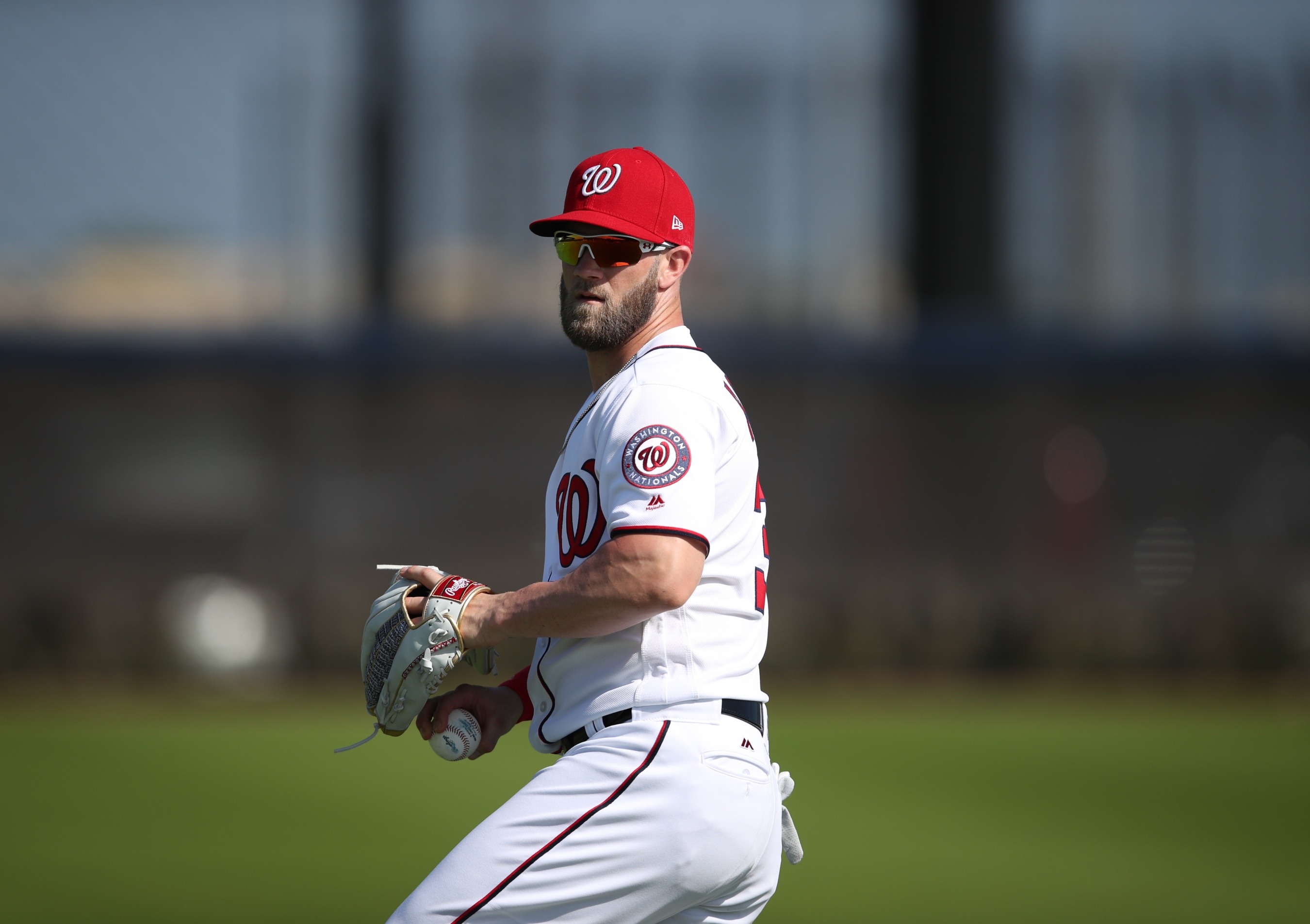Harper’s Megadeal Completes His Rise From Elite Prospect


Image credit: Bryce Harper (Photo by Tom DiPace)
In 2018, the Phillies watched as the Braves, fueled by young stars like Ronald Acuna, Ozzie Albies and Freddie Freeman, seized the National League East. The Phillies led the division as late as July 28, but a late-season tailspin plummeted them all the way to third place and their seventh consecutive season without a winning record.
Despite the summer swoon, the team had pieces in place to make fans optimistic about the future. Aaron Nola had emerged as an ace-caliber starter at the front of the rotation alongside righty Jake Arrieta. Inconsistent but intriguing outfielder Odubel Herrera was at the top of the lineup, and slugger Rhys Hoskins was mashing in the middle. Righthander Seranthony Dominguez also added a late-game force out of the bullpen.
That group made for a nice starting point, but the best weapon the Phillies had in their arsenal entering the offseason was John Middleton’s wallet. The owner famously quipped at the beginning of the winter that his team was ready to spend “stupid money,” and then he spent the next few months backing up that statement.
The Phillies added Andrew McCutchen for $45 million (which allowed Hoskins to move out of left field and back to first base), signed reliever David Robertson for $23 million, locked up Nola for four more years and buttressed those moves with trades for All-Stars at both shortstop and catcher in Jean Segura and J.T. Realmuto.
Even without another move, the roster looked pretty darn stout. On Wednesday, they added the finishing kick by reportedly agreeing with Bryce Harper on a deal that would keep the superstar outfielder in Philadelphia for the next 13 seasons. The contract, first reported by Fancred Sports, is said to be worth $330 million and comes with a full no-trade provision and no opt-out clauses.
Harper’s deal gives the Phillies a potentially lethal lineup and completes his own journey from one of the very best prospects in the history of the sport to the recipient of its most lucrative contract ever.
As a prospect, Harper topped every list possible. He ranked as the No. 1 prospect in the South Atlantic League and Eastern League for his performances during the 2010 season and twice topped the Arizona Fall League’s Top 20 list. He was the Nationals’ No. 1 prospect twice, and joined Andruw Jones and Joe Mauer as one of just three players to top Baseball America’s Top 100 list multiple times.
All of those No. 1 finishes put Harper among elite company, and that was before he’d ever played a game in the major leagues.
“Harper’s raw tools are freakish,” BA wrote in his scouting report in the 2011 Prospect Handbook. “His power rates as a legitimate 80 tool on the 20-80 scouting scale. There are plenty of stories and videos of him hitting 500-foot homers, and he has the ability to easily backspin the ball over the fence to any part of the park.”
In addition to that 80-grade power, Harper’s arm also graded as an 80, his hitting and defense as a 60 and his speed as a 55. BA added an overall grading system—designed to forecast a player’s ceiling and likelihood of reaching it—to its 2012 Handbook and pegged Harper as an 80 Low. In other words, we believed that there was very little standing in the way of Harper, who at that time was two months past his 19th birthday, becoming one of the very best players in the game.
He hasn’t been as consistently great as his tools suggested, but through age 25 he’s already won an MVP and a Rookie of the Year, been an All-Star six times and produced 27.4 wins above replacement, as measured by Baseball-Reference.com.
Free agency has endured somewhat of a deep freeze over the last two offseasons, but at the end of the day Harper’s youth, tools and production helped catapult him to the richest payday the sport has ever seen.

Comments are closed.